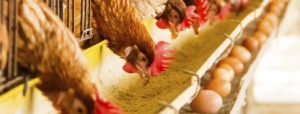
Taste is one of the important sensory mechanisms to identify and satiate with nutritious food. Initially, it was reported that chickens do not have taste buds and later about 70 taste buds were found in the oral cavity. This number is low compared to mammals, e.g., rats (∼1000 taste buds), humans (∼10,000 taste buds) and cattle (15,000-20,000 taste buds). It has been argued that birds have a lower taste acuity compared to mammals due to their low taste bud number. Further studies demonstrated that chickens have a higher number of taste buds varying in number from 240 to 360 depending on the breed, e.g., broilers have more taste buds compared to the layer-type. However, chickens are able to quickly adapt their feeding behaviour based on taste cues and the ratio of the number of taste buds/oral cavity volume is higher than in most mammals (Roura et al. 2013). Emerging knowledge mostly derived from genome sequencing, shows that birds have a well-developed taste system. Predicted taste genes for umami, sour, salt, bitter, calcium and lipids are present in the chicken and turkey.

Several studies say the addition of sweeteners in poultry diet help in inducing a sense of taste to enhance feed consumption, but also exert additional biological functions, especially in the gastrointestinal tract. A recent study published in Poultry Science showed that stevioside added in a diet at 250mg/ kg increased growth performance, reduced inflammation in intestinal cells and offered jejunal antioxidant properties. Bentoli’s antistress product Pollstress® and metabolic enhancer Metostim® contain sweeteners that play roles in energy supply and osmotic balancing. They will play the roles of enhancing feed consumption and gut health too.

